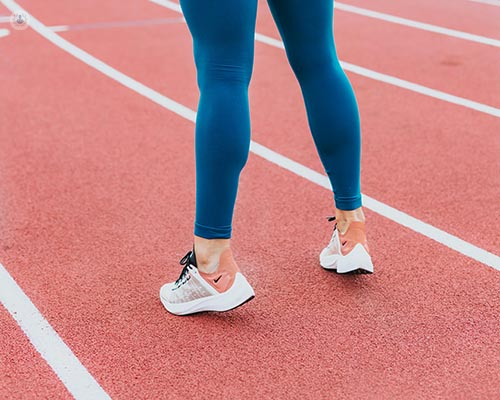ACL reconstruction explained: surgery, recovery, and expected outcomes
Escrito por:ACL reconstruction is a common surgical procedure aimed at restoring stability and function to the knee after an anterior cruciate ligament (ACL) injury. Leading consultant trauma and orthopaedic surgeon Mr Ricci Plastow provides a comprehensive overview of the surgery, detailing the steps involved, the recovery process, and the expected outcomes

What are the common indications for ACL reconstruction, and when is this surgical procedure typically recommended for individuals with ligament injuries?
This type of injury and the surgery to reconstruct the ligament is essentially a lifestyle procedure. It's about improving the patient's quality of life. Many patients can live without an anterior cruciate ligament if it's ruptured, but for those who want to play sports or maintain a very active lifestyle and have knee stability, ACL reconstruction surgery is usually recommended.
Age isn't a major factor, but younger patients tend to have this surgery more often because they typically play more sports and exercise more. However, we are increasingly performing this operation on older patients who are also leading active lifestyles. Ultimately, the decision to have an ACL reconstruction depends on the need for stability and the patient's desire for an active lifestyle.
Can you outline the process of ACL reconstruction surgery, including the key steps and considerations for ensuring successful recovery?
ACL reconstruction is usually a day case procedure. The patient comes in on the day of the surgery and goes home the same day with crutches after seeing the physiotherapy team. The procedure typically takes around an hour to an hour and a half, and recovery takes a few hours post-surgery. The first few days afterwards are unfortunately swollen and a bit painful, and the patient will need painkillers, along with regular icing and elevating of the leg.
However, the swelling and pain gradually resolve. The recovery phase for an ACL reconstruction is quite long, particularly for patients wanting to return to sports. It can take anywhere from six months to a year, depending on the sport. For basic running or gym work, recovery is usually around six months.
For pivoting sports such as football or rugby, it usually takes at least nine to twelve months to build up the necessary strength, agility, and coordination to ensure a safe return.
During this time, there are many physiotherapy sessions, and recovery relies heavily on the patient building up muscle mass and strength in their lower legs. Thus, ACL reconstruction is only part of the process; it heavily depends on physiotherapy and the patient's drive and ambition to return to their normal activity level.
What is the expected rehabilitation timeline following ACL reconstruction, and how does physiotherapy contribute to restoring knee function and preventing future injuries?
Physiotherapy is crucial to the success of this type of operation. It takes several months to rebuild strength in the leg because the muscles weaken due to the swelling and pain from the surgery. Restoring muscle mass to pre-injury levels takes time.
For individuals considering ACL reconstruction, what are the anticipated outcomes in terms of knee stability, and what advice is provided to enhance long-term joint health post-surgery?
Regarding recovery, we inform patients that there are no real restrictions on their activity after a sufficient period of rehabilitation. Our goal is to help them return to their normal activities, which is one of the main reasons for the surgery. However, during the six to nine month rehabilitation period, the reconstruction is still undergoing a process of strengthening.
If you would like to book a consultation with Mr Plastow, do not hesitate to do so by visiting his Top Doctors profile today.


